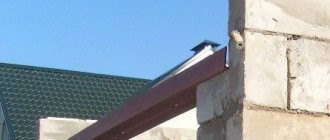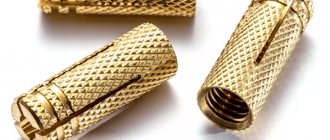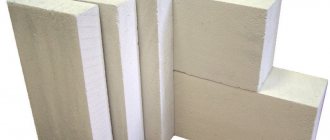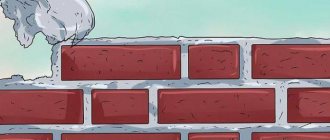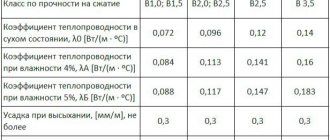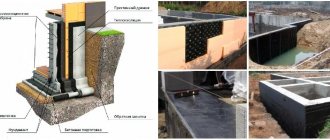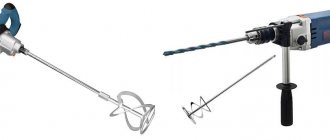The need for special fasteners
Fasteners for foam blocks must correspond to the physical properties of foam concrete. Namely, take into account the low density of the material and the need to form additional support.
What problems might arise? Yes, nothing will simply stay on the wall if it is not fastened correctly. If you incorrectly calculate the load, the fastening element will simply fall out.
Only special fasteners for foam blocks will allow you to securely fasten any elements without weakening the strength of the fastening.
And there are many of them. We’ll talk further about what the mounting in the foam block can be like.
How to choose fasteners for foam blocks
When using any building material, it is necessary to use consumables that will correspond to its physical properties and qualities. This is determined by a simple definition: The consumable matches the material and enhances the fastening capabilities.
In accordance with this definition, a similar consumable element and fastening is available for the foam block. Taking into account the low density of the block, the fastening will not only easily fit into it, but will also create additional support, and this, in turn, makes it possible to count on increased loads.
Types of fasteners with pros and cons
Fasteners for foam blocks can be in the following options:
- self-tapping screws for foam blocks;
- various dowels;
- screw with expansion element;
- simple and chemical anchors.
Each of these products can be used at any stage of construction work. However, some types, such as dowel nails or screws, are most often used for interior decoration.
When cladding facades, it is recommended to purchase elements coated with an anti-corrosion compound that prevents loss of performance.
Self-tapping screw
It may seem strange, but when attaching to a foam block, it is allowed to use standard wood screws. The denser the foam concrete block, the better the self-tapping screw will hold in it.
Screws will not hold well in foam concrete that is too porous. However, for creating structures that experience minimal loads, self-tapping screws for foam blocks are quite suitable.
For example, if you need to hang a picture or a small mirror, screws measuring, for example, 3.5x55 mm will be quite appropriate.
The main disadvantage of self-tapping screws when used for foam concrete blocks is the possibility of destruction of the block when screwing in the self-tapping screw.
Therefore, in low-density foam concrete blocks, which are usually used in the construction of partitions, a dowel is inserted into the foam block in pair with the self-tapping screw.
Dowel for foam concrete
The main advantage of such a product is expansion inside the block after installation. The dowel compacts the material, creating support. The self-tapping thread passes into the pores of the foam concrete without disturbing its structure. Fasteners for foam concrete of this kind are made from various materials. We choose taking into account the features of the future design.
When buying dowels, you need to take care of purchasing a special tool for working with them - a drill or screwdriver. The latter is considered more suitable, since rapid rotation of the drill attachment can destroy the fragile foam concrete block. If we use a drill, do it carefully.
The dowel for foam blocks is designed for inserting metal screws. It has an inexpensive price compared to other options. This method of fastening has virtually no disadvantages, however, incorrect installation can lead to the destruction of the wall element.
Read more about choosing a dowel for a foam block in this article.
Expansion screw
For fastening to foam concrete, screws equipped with metal expansion elements are often used. Such fasteners are suitable for mounting profiles and other structural elements on foam and aerated concrete.
Installation is straightforward. It is done like this:
- using a special drill, make a hole;
- insert and tighten the fastening element.
During the screwing process, the metal spacer is strengthened into the material. Thanks to this, such fasteners for foam concrete provide reliable fixation.
Anchor fasteners for foam blocks
No fastener for foam concrete can compare with anchor. This is an ideal solution in most cases, especially when fastening reliability is important.
Anchoring is the wedging of the actual anchor in the wall.
It is not difficult to work with such fasteners on foam blocks. The installation process includes the following steps:
- hole formation;
- insertion of anchor;
- unclamping by screwing.
This scheme allows you to obtain the most durable fixation, applicable in the construction of the most complex structures.
There is another option using glue, called “chemical anchor”.
Such fastening to the foam block, subject to technology, also withstands heavy loads, having a wide range of applications. And it is resistant to sub-zero temperatures. Not cheap, really.
Anchoring into a foam block is used when installing a Mauerlat. In such cases, only one fixation option is possible - using anchor bolts with nuts. The principle of operation is no different from that in the construction of brick buildings.
More information about choosing an anchor for a foam block here.
Wood dowels
Let us highlight separately this fastener for foam blocks. Old, proven, cheap and moderately reliable. The only possible one when you need it urgently, but there is nothing of the above and there is no store nearby.
In theory, wooden dowels and plugs, like fastenings for foam blocks, are used to fix light objects, close holes from old screws, or eliminate previously made mistakes.
This simple and cheap method, requiring a minimum set of tools, however, I repeat, is not the most reliable. The dowel can be factory-made or made independently. When working, it is simply driven into the hole.
Anchor
Manufacturers produce special anchors for cellular blocks.
It is worth noting that a regular anchor will not work here; it simply will not withstand the load. In order to withstand certain loads, such a consumable must have a certain solution. Some anchors are driven into special plastic dowels. Thus, friction is created between the anchor and the porous structure of the blocks. To create a strong connection, installation is carried out in the following sequence:
- A hole is drilled in the block.
- The hardware is inserted into the prepared hole.
- The anchor is twisted and loosened.
With this fastening, a fairly strong connection with foam concrete is obtained. Metal and plastic bolts have a similar type of fastening; the installation of a foundation anchor bolt is similar.
Anchor for foam concrete
The anchor bolt is used when working with high-density foam concrete. Such fasteners can withstand any, including quite weighty structures. A plastic anchor, as a fastener for aerated concrete, is used for a more fragile material than foam concrete. It is suitable for gas silicate blocks.
The foundation bolt has found its application in the installation of heavy structures. This is a double-sided consumable, one end is threaded, the other has a device that can hold the foundation bolt itself in the base. The foundation should not deform in the future.
Choosing suitable fasteners for foam blocks
Select a fastener taking into account the type of work planned.
- Dowel nail. Suitable for fixing building and finishing materials on both internal and external walls.
- Plastic dowel. Used when installing lightweight interior items.
- Screw with spacer. Used in the installation of window frames, door frames, and communication systems.
- Metal anchor. We use such fasteners for foam concrete when installing hanging pieces of furniture that are heavy.
- Foundation bolt. Designed for the construction of structures experiencing high loads. Basically, as the name suggests, when attaching to the foundation.
- Chemical anchor is a universal fastener with a wide range of applications.
When choosing a mount for a foam block, we take into account the expected load.
Our stores stock mainly Russian, Finnish, Swedish and Chinese fasteners. Domestic products are optimal in terms of price and quality ratio.
Which dowel is best for foam block?
Better is the one that provides better adhesion of the fasteners to the foam concrete. This may be one of the following options:
- for mirrors or lamps it is better to use nylon dowels with a diameter of up to 12 mm;
- for pipeline installation (gas, water supply, sewerage), it is better to use metal dowels;
- if you need to hang heavy furniture, you should take special metal dowels;
- for facade work there are special facade dowels;
- frame dowels are used when installing window and door frames, as well as when installing guides on foam block walls;
- A light photograph, a small painting or a wall calendar can be supported by a simple nail, for which a dowel is not needed.
Whatever dowels you choose, you need to use them with fasteners designed specifically for them.
How to secure the front door
Separately about installing the front door. Here you need maximum reliability of fastening.
Even reinforced anchors will not save you. Firstly, the front door itself is very heavy. And secondly, such a heavy door is also slammed regularly. Sooner or later, the anchorage will become loose. And if the fastening was also not far from the edge of the wall, then it might fall out, along with a piece of foam block.
A good option is a frame around the perimeter of the opening from welded corners with pins into the wall. We are already attaching the door frame to it.
The gaps between the wall and the metal frame must be foamed with foam. This is not only heat and sound insulation. Polyurethane foam absorbs vibration well from closing doors. Yes, and strengthens the fastening of the door frame.
And, what is extremely important, the door cannot be installed so that the maximum load falls on the foam concrete blocks from below. Over time they will become loose. There should be a foundation block under the front door. If ordinary wall blocks are already installed under the entrance opening, remove them, pour concrete instead, and don’t forget to reinforce them.
How to attach the profile to the foam block
One of the most common questions about fastening into foam blocks during construction. And it occurs when covering foam block walls with plasterboard, as a rule.
The plasterboard is attached to the sheathing, the sheathing is attached to the profiles. The profiles are attached to the wall using hangers.
In some places, in places of increased load, anchors are used. Well, basically, of course, the profile should be attached to the foam block by installing it on hangers, which, in turn, are screwed to the wall using self-tapping screws and dowels. Three pairs of dowels/screws for one hanger: one in the center, two at the edges.
An ordinary plastic dowel with fairly large ribs. And an ordinary screw.
